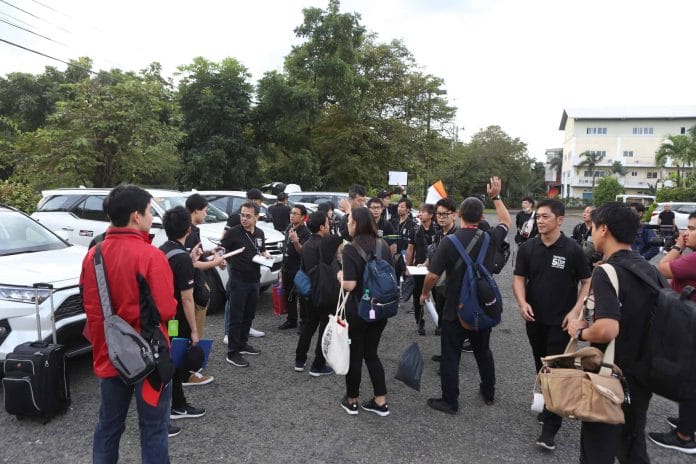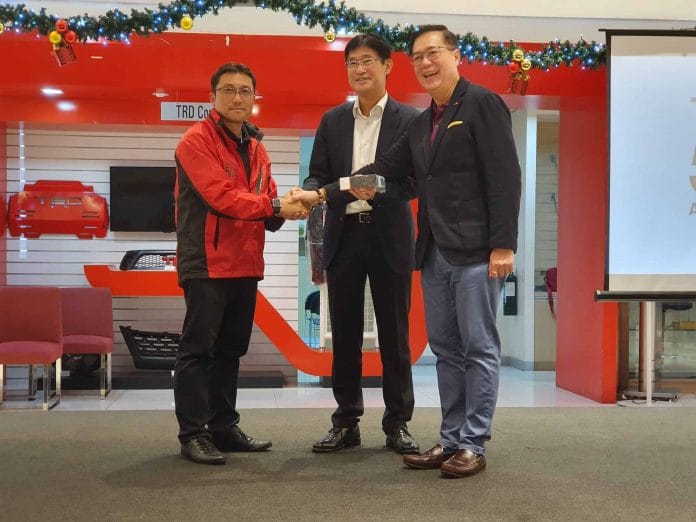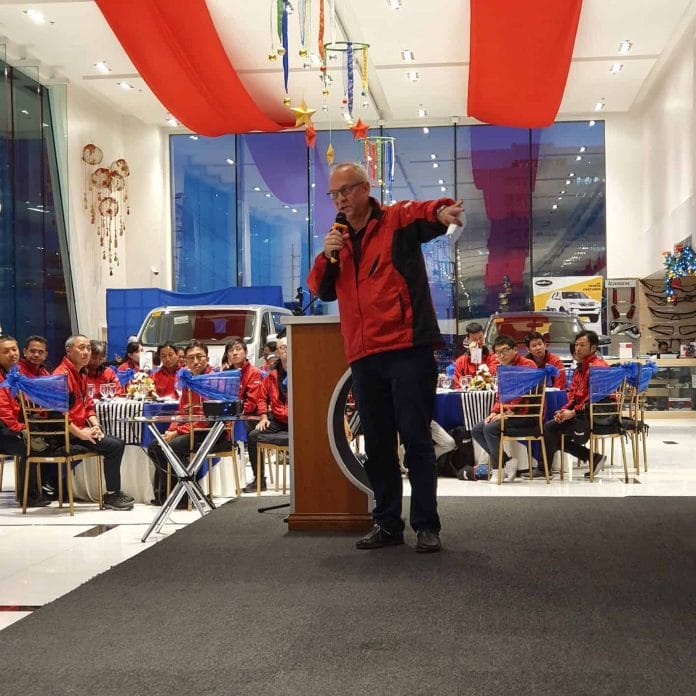Driving around the world for ever-better vehicles
Much is said about car companies drawing insight and learning from stints on the racetrack – primarily through motorsports – and cascading these onto production vehicles made for you and me. After all, it’s sexy, exciting, and always poster-ready.

Running the tough gauntlet of racing events is indeed not just a proving ground that ultimately raises the quality of vehicles, but also adds reputational value and prestige to brands.
Still, one can make the argument that everyday roads are where ordinary people usually take our cars to, so there’s undeniable wisdom in testing them there.

Beginning in 2014, Toyota Motor Corporation (TMC) staged a gargantuan endeavor called the “5 Continents Drive” which involves a team driving in “various Toyota vehicles in local communities, diverse terrains, and challenging environments which customers experience on the road on a daily basis.” From Australia that year, the team has travelled across “North and Latin America, Europe, and Africa. The group started (its) Asia Drive this February 2019 in the Middle East and is slated to end in Japan in time for the milestone Olympic Games and Paralympic Games Tokyo 2020.” Toyota boasts of this as a Genchi Genbutsu (“go and see for yourself”) project subsumed under its Gazoo Racing program.

Recently, the 5 Continents (or 5C) team found itself in our country for a 850-kilometer drive in various terrain. Toyota Motor Philippines (TMP) and global affiliates helped to stage the Philippine leg which commenced from TMP’s Santa Rosa, Laguna facility plant last November 19. A total of 27 Toyota engineers and technical experts from TMC, TMP, Toyota Daihatsu Engineering and Manufacturing (TDEM), and Toyota Motor Asia Pacific (TMAP) hit the roads of Metro Manila, Bulacan, Tarlac, La Union, Baguio, Pangasinan, Nueva Ecija, Pampanga, and Zambales and back to Manila for a goal event at TMP’s dealership along Manila Bay.

The nine-vehicle convoy was composed of the locally assembled Vios and Innova, along with Hilux, Corolla Altis Hybrid, Rush, Fortuner, and the RAV4 units.
“Toyota Motor Philippines is honored to be a part of the historic 5 Continents Drive, with our very own team members guiding the group as local experts. They will help the 5 Continents Drive team understand not only the local road conditions, but also the country’s transportation situation, and culture,” said TMP president Satoru Suzuki during the send-off ceremony. “This immersion project serves as an opportunity for the world to witness the Filipinos’ unique way of life and how cars are helping them go through their daily lives.”

The 5C complements and completes a laboratory of sorts from which the organization draws valuable lessons not only technical in nature. GT Capital Auto Dealership Holdings, Inc. chairman Vince Socco averred in an exclusive interview with Wheels, “Some people might misunderstand that this is only an engineering thing. More than that, we have some 700 people exposed to different roads over a period of five years. Seven hundred-fold, they will teach many others over the course of their stay in Toyota.”
Continued the executive, “We do (testing) for each model that we develop, like the IMV (vehicle platform) project. But this extended five-continent thing, the difference is that it’s not so much about the product, but about the people. As we’ve said, roads train people, people build cars. We can’t expect our team members to build ever-better cars if they’re just doing it from behind their desks. They need to understand how the cars are used, who the people are, and what the realities of vehicle usage are. Then they really can put not only their minds but their souls and hearts into it.”

Meanwhile, Toyota Motor Corporation 5 Continents Drive team 2C project secretariat/GR management division of motorsports promotion department’s Harold Archer explained to this writer that participants come from across the organization, “from engineers to white-collar workers in management, product, finance, HR.”
Adding to Socco’s observation, Archer said, “People should not be in a silo. One of the purposes of this project is to break the silos; break the walls.”
As for observations about Philippine road conditions, Archer said since the team had scouted local roads six months ago, much had changed by the time they actually drove here. It was raining heavily in some places, and one of the testers was very wary about potholes which were occasionally invisible because of flooding. “He realized that customers could not judge the location and depth of potholes,” he revealed. This may lead Toyota to employ some changes in the tuning of its suspension.
To be sure, there will be homologation implications, too, as data are gathered in a holistic fashion to fine-tune cars (while evolving team-member abilities). 5C is also about meeting customers and understanding their mobility needs. “It’s about polishing our sensors on real customer roads, not only on the test track,” commented Archer.
Surely, there has been a glut of information from 5C as the team has negotiated the Australian outback, endured -40 degrees Centigrade weather in Alaska, climbed 4,620 meters in Chile, drove in Middle Eastern deserts, and even risked changing tires in Africa with a pride of lions nearby. There are numerous QDR (quality, durability, and reliability) takeaways, for sure.
After his Philippine jaunt, Archer repairs back to Japan, then goes onto Vietnam for the next leg of the Asian tour which started in India. “This kind of scale is the first,” he underscored. “This many people. We have KPIs, we have data loggers.”
Will it lead to improvements in the next generation of vehicles? Definitely, he maintained, and insisted that data gathered are immediately transmitted back to TMC: “Right away, this gets fed back – to each division, each boss, and all the way to the top.”
Of course, there’s important confidence and credibility earned by each participant. “They can now speak with authority when they say this is how the car should be built,” concluded Socco.

